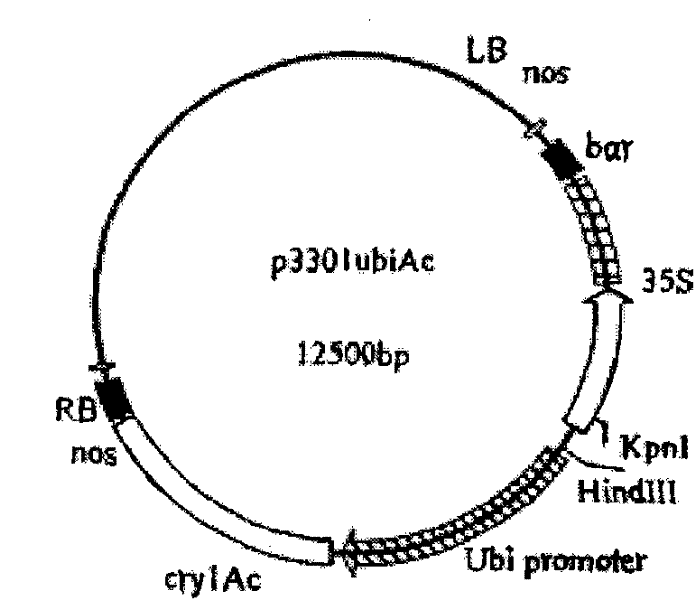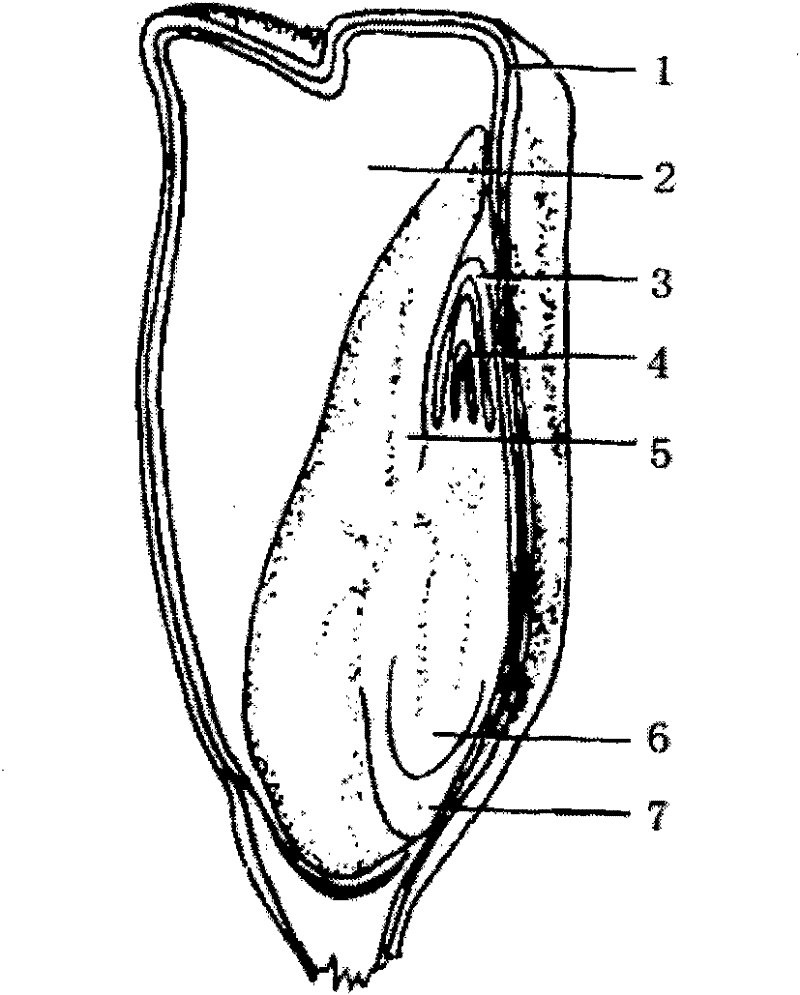Ultrasonic-assisted agrobacterium-mediated plant germination seed gene transformation method
A technique for seed germination mediated by Agrobacterium, which is applied in the fields of plant genetic improvement, botany equipment and methods, biochemical equipment and methods, etc., can solve the problems of low conversion rate, achieve convenient material collection, simple operation, and reduce workload Effect
- Summary
- Abstract
- Description
- Claims
- Application Information
AI Technical Summary
Problems solved by technology
Method used
Image
Examples
Embodiment 1
[0015] Embodiment 1. basic conversion method:
[0016] 1) Agrobacterium LBA4404 carrying the plasmid Cry1Ac was used as the exogenous gene donor. The plasmid Cry1Ac carries the Bacillus thuringiensis toxin protein AC gene and the plant selection marker gene bar, which endows plants with resistance to the herbicide basta (the active ingredient is Phosphiothricin or PPT). This gene construction was provided by researcher Wang Guoying of the Institute of Crop Science, Chinese Academy of Agricultural Sciences. The physical map of plasmid Cry1Ac is as follows figure 1 shown.
[0017] 2) Maize (Zea mays L.) inbred lines Chang 7-2 and Zheng 58, sorghum restorer line Jinliang 5, and wheat variety Jinzuo 239 were used as receptor materials.
[0018] 3) Transformation operation process: first after rinsing the seeds for testing in tap water, place them in 75% ethanol for 30 seconds, then rinse them with sterile distilled water for 3 times in the ultra-clean workbench and put them in ...
Embodiment 2
[0020] Example 2. Molecular detection of transgenic plants:
[0021] Molecular testing of transgenic plants was carried out according to the "Molecular Cloning Handbook":
[0022] 1) In this experiment, the total plant DNA was extracted by CTAB (cetyltriethylammonium bromide) method, and agarose gel electrophoresis was used to check the DNA extraction results and carry out DNA quantification. According to the nucleotide sequences of the Cry1Ac and bar genes, the 20 bp nucleotide pairs at the 5' end and the 3' end were respectively used to design primers for PCR amplification. The primer sequences and their amplified fragment sizes are as follows:
[0023] Cry1Ac gene
[0024] Upstream primer: 5'-CTGACCGTGACCGTGCTG-3'
[0025] Downstream primer: 5'-TGGTGCCGTAGGCGAACT-3'.
[0026] Amplified fragment size: 500bp
[0027] Bar gene
[0028] Upstream primer: 5'-GTCTGCACCATCGTCAACC-3'
[0029] Downstream primer: 5'-ACTCGGCCGTCCAGTCGTA-3'.
[0030] Amplified fragment size: 201...
Embodiment 3
[0033] Example 3. Maize genetic transformation:
[0034] In order to explore the influence of various factors on the transformation rate, an experiment including three factors including scratching the germinated seeds, ultrasonic treatment and adding screening agent to the culture medium after 48 hours of co-cultivation was designed. The ultrasonic treatment also included 3 intensity levels (300W, 600W and 900W), and genetic transformation was carried out on the maize inbred line Chang 7-2. Each treatment had 4 repetitions, and 500 germinated seeds were used for each repetition. A total of 1333 basta-resistant plants were screened out from all treatments. After the plants screened by basta are transplanted into the field, more than 80% of the seedlings can grow normally. Most of the plants behaved normally during flowering, and only a small number of plants showed variations such as failure to meet the flowering period and not being able to disperse powder normally. Accordin...
PUM
 Login to View More
Login to View More Abstract
Description
Claims
Application Information
 Login to View More
Login to View More - R&D
- Intellectual Property
- Life Sciences
- Materials
- Tech Scout
- Unparalleled Data Quality
- Higher Quality Content
- 60% Fewer Hallucinations
Browse by: Latest US Patents, China's latest patents, Technical Efficacy Thesaurus, Application Domain, Technology Topic, Popular Technical Reports.
© 2025 PatSnap. All rights reserved.Legal|Privacy policy|Modern Slavery Act Transparency Statement|Sitemap|About US| Contact US: help@patsnap.com



